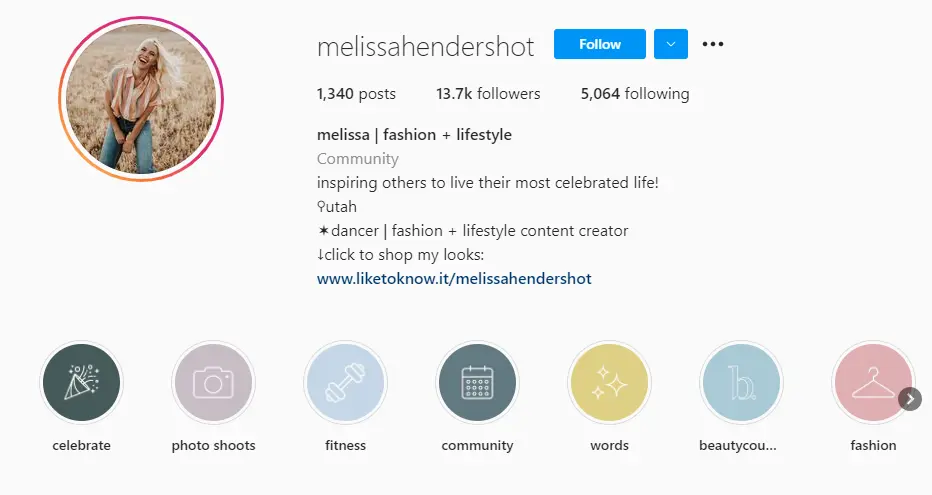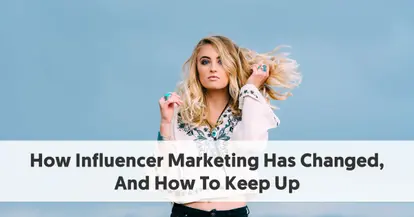Influencer marketing isn’t a new idea. In fact, if you want to be really accurate, a similar type of strategy started in the late 1800s when celebrities and royals were paid to promote products. But our digital and social media form of influencer marketing flourished in the last decade, exploding in popularity in recent years.
Do you know what it takes for your brand to execute a successful influencer marketing strategy?
It takes more than an Instagram account and some free product to make waves in today’s social media world, where the market is flooded with big brands paying big dollars for influencer content.
We’ll get you up to date on everything you need to know about influencer marketing in 2018, so you can either adjust your current influencer strategy or— if you’re just getting started— have the know-how to build an effective influencer strategy from the ground up.
How Influencer Marketing Has Changed, And How To Keep Up:
What major trends have affected how influencer marketing works?
The needs of consumers evolve, which means influencer marketing must evolve to help businesses meet those needs. Here are some trends that have helped shape influencer marketing into what it is today, and what it will be in the foreseeable future.
Less one-off tactics with high-profile influencers, more long-term influencer strategies with micro-influencers.
Rather than working with numerous influencers on small campaigns and using high-profile or celebrity influencers, more businesses are starting to work long-term with micro-influencers who match their brands style and voice.
YouTube megastars may have millions of followers—but having millions of followers doesn’t mean those millions are engaged. Micro-influencers have smaller audiences, typically 1,000 to 10,000, but these influencers have a more personal relationship with their audience. They understand and respect their audience, and their audience feels more of a personal connection with them, knowing who they are and what they like.

Source: instagram.com
It can cost thousands of dollars to work with dozens of influencers on one-off content pieces. The challenge then is trying to tie those efforts to a return on investment in order to justify the spend. That’s why more brands are establishing long-term relationships with micro-influencers. One Instagram post or vlog only provides short-term results. A longer-term approach where you cultivate a quality relationship with a micro-influencer, and ultimately consumers, will give you more quality content and more effective engagement that will drive long-term results for your company.
Micro-influencers cost less to work with and produce 60% higher campaign engagement rates, driving 22 times more weekly conversions than their macro counterparts.
Shifting more budget from mainstream marketing tactics to influencer marketing strategies.
The proof of value is in the engagement, brand awareness, and conversions influencers provide. More brands than ever are making influencer marketing a key component of their marketing strategies.
In fact, the Association of National Advertisers surveyed 158 brands and found that 75% of them use influencer marketing and 43% plan to increase their influencer budgets in the next year.
Instagram powerhouse Frank Beauty uses influencer marketing as a primary method to generate buzz before a new product launch. Prior to the launch of their coffee body scrub, they sent thousands of sample products to influencers and micro-influencers across Australia (where the company is based) who posted about their experience with the product using the hashtag #FrankPaidMe. In their first year, Frank grew to 350,000 followers on Instagram. Fast-forward to the present, and the company is worth more than $20 million with more than 629,000 Instagram followers.
Embracing influencer events.
As influencers become more and more inundated with brands trying to send them product, companies are getting more creative with ways to attract influencers and encourage them to share their content.
An influencer event — a (typically glamorous and Instagrammable) party for influencers to mingle and enjoy themselves — gives influencers the opportunity to share live updates of their experiences.
These events offer a chance for influencers to try out products or services and get sneak peeks into new brand offerings. They also provide the brand a chance to connect with influencers on a more personal level, fostering connection and increasing the potential for future partnerships.
Take a Dubai resort as an example: In order to generate more buzz for their hotel, the Burj Al Arab Jumeirah invited 10 popular travel influencers to visit the resort, tour the city, and enjoy the hotel’s 5-star amenities at the #WorldsUltimateInstaMeet. The result was immediate: 25,000 combined comments across the influencers’ accounts, and 3.2 million new social media followers for the hotel.
Now, we get that it’s not feasible for every brand to fund luxury vacations for 10+ influencers — but the concept can be applied in smaller ways unique to your business. If you think your product would be of interest to a group of influencers or micro-influencers in your area, you may want to give an event a shot.
What does your business need to do to stay successful and lucrative with influencer marketing?
In marketing, having a plan equals more success. Here’s what you have to do to be profitable with influencer marketing.
Define what success looks like to your business.
This one is a no-brainer but still needs to be said. Define and track your goal(s) of influencer marketing and how an influencer can help you reach said goal(s). Whether it’s to generate sales, grow brand awareness or something else, clearly define your goal(s) before searching for and hiring influencers.
Align your brand with the right influencers.
What is the “right” influencer? More often than not, the right influencer is someone who:
- Is trustworthy
- Isn’t just wanting money or free products but shares excitement when they get your product
- Is invested in your brand
- Has the audience size you're looking for and good follower engagement. A good benchmark is 10% engagement — meaning 10% of their follower count are liking and commenting on their photos.
- Creates content that gets into consumers newsfeeds
If you find someone who meets this list, they’ll make a good long-term brand ambassador for your business.
Stop doing one-off marketing tactics.
One-off tactics mean you’re always having to find new influencers. That’s time, energy and money you don’t want to spend, and stress you don’t want to create. Think long-term instead. Find creative, authentic influencers you can trust and build a genuine relationship with—and keep them around for a while. Doing so will create a good relationship between you and the influencer(s), and ultimately between you and consumers.
Use Instagram influencers.
Instagram isn’t just a creative, visual platform. It’s an easy and great way to connect with people who have similar passions. It’s become a close-knit community for influencers and consumers alike. That’s why in a #HASHOFF report, 92% of influencers chose Instagram as their No. 1 platform. So while consumers are on all the social media platforms, for more successful influencer strategies, lean more toward using influencers with a well-known Instagram presence.
Differentiate your brand.
With more brands planning to up their budget for influencer marketing, audiences may start to gloss over influencer content. If your brand is going to be successful in 2018, you have to break through the noise. You have to find out how you and your influencers can deliver value and profitable results without losing authenticity.
People connect with people. Putting a relatable face, or a few, to your brand will promote a genuine connection with consumers, and when you create a long-term relationship with the right influencers and execute an effective influencer strategy, your brand will get the customer loyalty and results you want.





